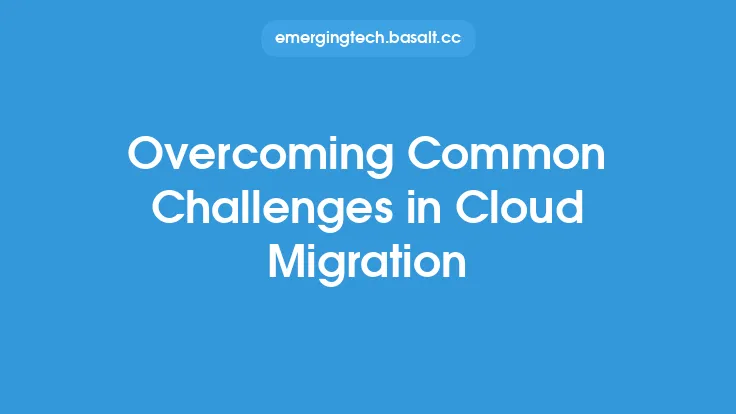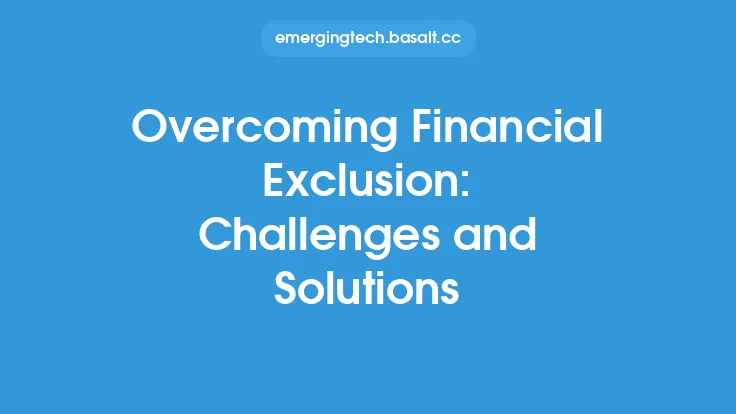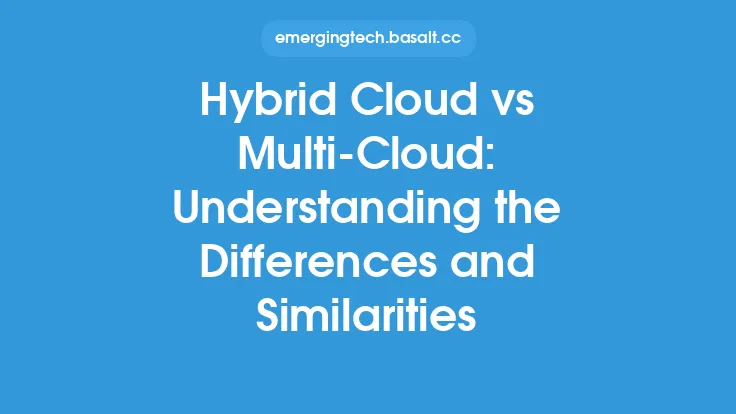As organizations continue to adopt hybrid cloud strategies, they often encounter a multitude of challenges that can hinder the success of their cloud initiatives. These challenges can range from technical and operational issues to financial and strategic concerns. In this article, we will delve into the common pain points associated with hybrid cloud adoption and provide solutions to help organizations overcome these challenges.
Introduction to Hybrid Cloud Challenges
Hybrid cloud environments are complex and require careful planning, management, and maintenance. One of the primary challenges organizations face is ensuring seamless integration and interoperability between different cloud services and on-premises infrastructure. This can be particularly difficult when dealing with multiple cloud providers, each with their own set of APIs, security protocols, and management tools. Additionally, hybrid cloud environments often require significant investments in networking, storage, and security infrastructure, which can be costly and time-consuming to implement.
Security and Compliance Challenges
Security and compliance are major concerns for organizations adopting hybrid cloud strategies. With data and applications spread across multiple cloud services and on-premises infrastructure, ensuring the security and integrity of sensitive information can be a daunting task. Organizations must navigate a complex web of security protocols, compliance regulations, and governance requirements, which can be overwhelming. To address these challenges, organizations can implement a unified security framework that encompasses all cloud services and on-premises infrastructure. This can include implementing identity and access management (IAM) solutions, encrypting data in transit and at rest, and conducting regular security audits and compliance assessments.
Management and Monitoring Challenges
Managing and monitoring hybrid cloud environments can be a significant challenge, particularly when dealing with multiple cloud providers and on-premises infrastructure. Organizations must be able to monitor and manage resources, applications, and services across different cloud services and infrastructure, which can be time-consuming and require significant expertise. To address these challenges, organizations can implement cloud management platforms (CMPs) that provide a unified interface for managing and monitoring cloud resources, applications, and services. CMPs can also provide automation and orchestration capabilities, which can help streamline cloud management tasks and improve efficiency.
Networking and Connectivity Challenges
Networking and connectivity are critical components of hybrid cloud environments, and organizations often face significant challenges in ensuring seamless connectivity between cloud services and on-premises infrastructure. This can include ensuring low latency, high bandwidth, and secure connectivity, which can be difficult to achieve, particularly when dealing with multiple cloud providers and on-premises infrastructure. To address these challenges, organizations can implement software-defined networking (SDN) solutions, which can provide a unified and programmable network infrastructure that spans cloud services and on-premises infrastructure. SDN solutions can also provide advanced security and traffic management capabilities, which can help improve network performance and security.
Cost and Financial Challenges
Hybrid cloud environments can be costly to implement and maintain, particularly when dealing with multiple cloud providers and on-premises infrastructure. Organizations must navigate a complex web of pricing models, licensing agreements, and cost structures, which can be overwhelming. To address these challenges, organizations can implement cloud cost management solutions, which can provide a unified view of cloud costs and help optimize cloud spending. These solutions can also provide advanced analytics and reporting capabilities, which can help organizations identify areas of inefficiency and optimize cloud resources.
Solution Strategies
To overcome the challenges associated with hybrid cloud adoption, organizations can implement a range of solution strategies. These can include:
- Implementing a unified security framework that encompasses all cloud services and on-premises infrastructure
- Using cloud management platforms (CMPs) to manage and monitor cloud resources, applications, and services
- Implementing software-defined networking (SDN) solutions to provide seamless connectivity between cloud services and on-premises infrastructure
- Using cloud cost management solutions to optimize cloud spending and improve efficiency
- Developing a comprehensive cloud strategy that aligns with business objectives and requirements
- Providing training and education to IT staff and developers on hybrid cloud technologies and best practices
Best Practices for Hybrid Cloud Adoption
To ensure successful hybrid cloud adoption, organizations should follow a range of best practices. These can include:
- Developing a comprehensive cloud strategy that aligns with business objectives and requirements
- Conducting thorough risk assessments and security audits to identify potential vulnerabilities
- Implementing a unified security framework that encompasses all cloud services and on-premises infrastructure
- Using cloud management platforms (CMPs) to manage and monitor cloud resources, applications, and services
- Providing training and education to IT staff and developers on hybrid cloud technologies and best practices
- Continuously monitoring and evaluating cloud performance and security to identify areas for improvement
Conclusion
Hybrid cloud adoption can be a complex and challenging process, but with the right strategies and solutions, organizations can overcome these challenges and achieve their cloud objectives. By implementing a unified security framework, using cloud management platforms, and providing training and education to IT staff and developers, organizations can ensure successful hybrid cloud adoption and improve their overall cloud experience. Additionally, by following best practices and continuously monitoring and evaluating cloud performance and security, organizations can optimize their cloud resources, improve efficiency, and reduce costs.





